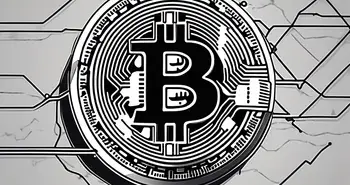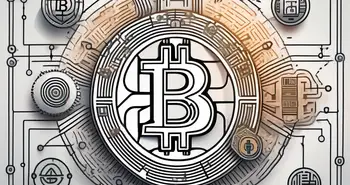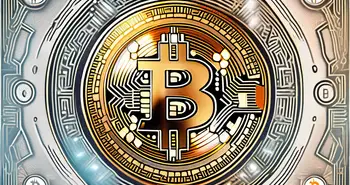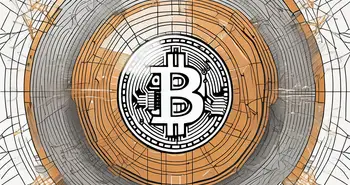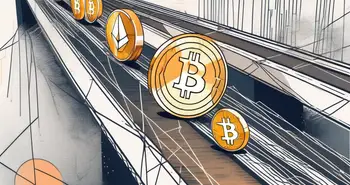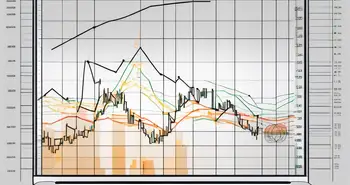What Is Satoshi? Explained
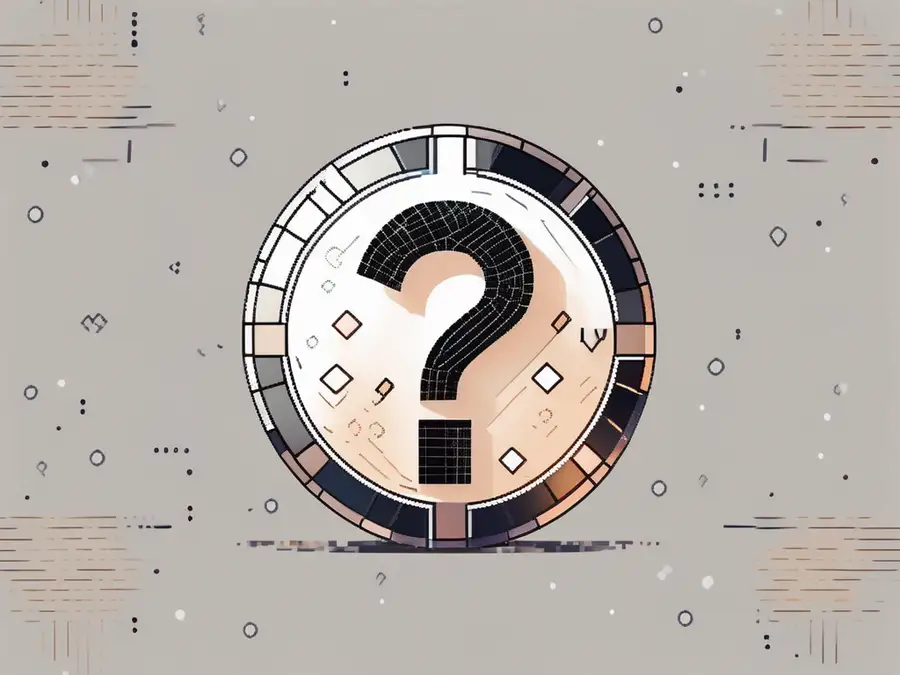
I'm sure you've heard the term “Bitcoin” thrown around quite a bit in recent years. But have you ever wondered what exactly “Satoshi” is? Well, wonder no more! In this article, I'll explain everything you need to know about Satoshi – from its origin to its significance in the cryptocurrency world. So let's dive right in!
Understanding the Basics of Satoshi
First things first, let's get acquainted with the basics of Satoshi. The term “Satoshi” refers to the smallest unit of Bitcoin. Yes, you heard that right – Bitcoin can be broken down into smaller units, and Satoshi is the tiniest of them all.
Delving deeper into the world of cryptocurrency, it's fascinating to note that the concept of dividing Bitcoin into smaller units not only enhances its usability but also pays homage to the visionary creator of this digital currency.
The Origin of Satoshi
The name “Satoshi” is derived from the mysterious creator of Bitcoin, Satoshi Nakamoto. Nobody knows for sure who Satoshi Nakamoto is, as their identity remains shrouded in secrecy. But what we do know is that this individual or group of individuals developed Bitcoin, the first decentralized digital currency, and introduced the concept of Satoshi as its smallest unit.
Unveiling the enigmatic nature of Satoshi Nakamoto adds an aura of mystique to the world of cryptocurrencies. The decision to name the smallest unit of Bitcoin after its creator not only immortalizes their contribution but also serves as a constant reminder of the revolutionary potential that Bitcoin embodies.
Satoshi as the Smallest Unit of Bitcoin
Now, you might be wondering, why would anyone need to break down Bitcoin into smaller units? Well, Bitcoin's value has soared over the years, making it quite expensive. To make it more accessible, Bitcoin can be divided into smaller increments, with each Satoshi representing a fraction of a Bitcoin. Think of it like cents in a dollar – Satoshi is to Bitcoin what cents are to dollars.
This division of Bitcoin into Satoshis not only facilitates microtransactions but also fosters a sense of inclusivity within the cryptocurrency community. By allowing individuals to own and transact in fractions of a Bitcoin, Satoshi ensures that the benefits of this groundbreaking digital currency are within reach of a wider audience, regardless of financial constraints.
The Significance of Satoshi in the Cryptocurrency World
Satoshi holds great significance in the cryptocurrency world, playing a vital role in various aspects. Let's explore some of its key contributions:
Named after the mysterious creator of Bitcoin, Satoshi Nakamoto, a Satoshi is the smallest unit of Bitcoin, equivalent to one hundred millionth of a Bitcoin. This minute denomination allows for precise and detailed transactions within the Bitcoin network, ensuring that even the smallest amounts can be accurately accounted for and transferred securely.
Role of Satoshi in Bitcoin Transactions
When you engage in a Bitcoin transaction, Satoshi comes into play. Each transaction involves a specific number of Satoshis, which determine the amount being transferred. Just like you can't spend a dollar without cents, you can't spend Bitcoin without Satoshis.
Furthermore, the use of Satoshis in Bitcoin transactions helps maintain the transparency and integrity of the blockchain ledger. By breaking down Bitcoin into smaller units, the system can record and verify transactions with precision, creating a secure and efficient network for financial exchanges.
Why Satoshi Matters in Cryptocurrency Trading
As cryptocurrency trading gains momentum, Satoshi becomes even more important. Traders often deal with fractions of Bitcoin, and these fractions are measured in Satoshis. Understanding the value of Satoshis is crucial for navigating the cryptocurrency market and making informed trading decisions.
Moreover, the concept of Satoshis extends beyond just Bitcoin transactions. Many other cryptocurrencies, known as altcoins, also utilize Satoshis or similar small units for their transactions. This universal standardization of small denominations across various digital currencies simplifies cross-platform trading and fosters a cohesive ecosystem for the exchange of value in the digital realm.
How to Calculate Satoshi
Now that we understand the significance of Satoshi, let's delve into the calculations involved:
Conversion Rates: Satoshi to Bitcoin
Converting Satoshi to Bitcoin (and vice versa) is relatively simple. One Bitcoin consists of 100 million Satoshis. So, if you have 50,000 Satoshis, that would be equal to 0.0005 Bitcoin (50,000 divided by 100 million).
Understanding the relationship between Satoshi and Bitcoin is crucial in the world of cryptocurrency. Satoshi Nakamoto, the mysterious creator of Bitcoin, named the smallest unit of Bitcoin after himself. This naming convention pays homage to the founder and ensures that even the tiniest fraction of Bitcoin carries significance.
Tools for Calculating Satoshi
If you're not a fan of mental math, don't worry! Several online tools and calculators can help you convert Satoshi to Bitcoin and vice versa. These handy tools provide instantaneous and accurate conversions, making your life much easier.
One popular tool for calculating Satoshi conversions is the CoinMarketCap website. This platform not only offers real-time data on cryptocurrency prices but also includes a user-friendly converter for quickly determining the value of Satoshi in Bitcoin and other digital currencies. By utilizing these tools, both beginners and seasoned traders can navigate the complex world of cryptocurrency with ease.
Common Questions About Satoshi
Now, let's address some of the common questions people have about Satoshi:
Is Satoshi the Same as Bitcoin?
No, Satoshi is not the same as Bitcoin. While Bitcoin is the overall cryptocurrency, Satoshi is the smallest unit of that cryptocurrency. Bitcoin is like the whole pie, representing the entire digital currency system, while Satoshis are the individual slices that make up that pie. Named after Bitcoin's mysterious creator, Satoshi Nakamoto, each Satoshi is equal to one hundred millionth of a single Bitcoin. This minute subdivision allows for microtransactions and precise value transfers within the Bitcoin network.
It's fascinating to think of Satoshis as the building blocks of the Bitcoin ecosystem, where even the tiniest fraction holds value and plays a crucial role in the functionality and usability of the cryptocurrency.
Can You Buy and Sell Satoshi?
Technically, it's not possible to buy or sell Satoshis directly, as they are fractions of a Bitcoin. Instead, you can buy and sell Bitcoin in various increments, and those transactions involve Satoshis. So, when you buy or sell Bitcoin, you're indirectly dealing with Satoshis. This unique feature of Bitcoin highlights its divisibility and the intricate nature of its underlying technology.
Furthermore, the concept of Satoshis sparks discussions about the future of digital currencies and the potential for even smaller units to be utilized in transactions. As the world delves deeper into the realm of cryptocurrencies, understanding the significance of Satoshis can provide valuable insights into the evolving landscape of decentralized finance and blockchain technology.
The Future of Satoshi
Now, what does the future hold for Satoshi? Let's consider a couple of aspects:
Potential Changes in Satoshi Value
As Bitcoin's value fluctuates, so does the value of Satoshis. With the increasing adoption and acceptance of Bitcoin, the value of Satoshis may continue to evolve. Keeping an eye on these changes can help you stay informed about the cryptocurrency market.
Satoshi's Role in Future Cryptocurrency Developments
As the cryptocurrency industry develops and new digital currencies emerge, the concept of dividing cryptocurrencies into smaller units, similar to Satoshis, may become more common. Satoshi's influence on future developments in the cryptocurrency space remains to be seen.
Finally, I would like to share a personal story to exemplify the importance of Satoshis. A few years ago, I decided to invest in Bitcoin. The prices were surging, and I believed it was a great opportunity. However, with Bitcoin being quite expensive at the time, I couldn't afford a whole Bitcoin. So, I started buying smaller increments, measured in Satoshis. Over time, my investment grew, and I witnessed firsthand the power of Satoshis as a gateway to the world of Bitcoin.
FAQ – Frequently Asked Questions
What is Satoshi?
Satoshi is the smallest unit of Bitcoin, named after the mysterious creator of Bitcoin, Satoshi Nakamoto.
How do I convert Satoshi to Bitcoin?
To convert Satoshi to Bitcoin, divide the number of Satoshis by 100 million. For example, 50,000 Satoshis is equal to 0.0005 Bitcoin.
Can I buy and sell Satoshis?
No, you cannot buy or sell Satoshis directly. Instead, you buy and sell Bitcoin, and those transactions involve Satoshis.
And there you have it – a comprehensive guide to understanding Satoshi. Now you can impress your friends with your knowledge of the smallest unit of Bitcoin! Happy investing!
Now that you're equipped with the knowledge of Satoshi and the intricacies of Bitcoin, why not take your cryptocurrency journey to the next level with Morpher? As a revolutionary trading platform, Morpher empowers you to trade Bitcoin and a multitude of other assets with zero fees and infinite liquidity. Embrace the future of investing with fractional shares, short selling capabilities, and up to 10x leverage on your trades. Experience the safety and control of a non-custodial wallet and the innovation of Virtual Futures. Sign Up and Get Your Free Sign Up Bonus today, and join the community of traders who are reshaping the world of investment on Morpher.com.

Disclaimer: All investments involve risk, and the past performance of a security, industry, sector, market, financial product, trading strategy, or individual’s trading does not guarantee future results or returns. Investors are fully responsible for any investment decisions they make. Such decisions should be based solely on an evaluation of their financial circumstances, investment objectives, risk tolerance, and liquidity needs. This post does not constitute investment advice.

Painless trading for everyone
Hundreds of markets all in one place - Apple, Bitcoin, Gold, Watches, NFTs, Sneakers and so much more.

Painless trading for everyone
Hundreds of markets all in one place - Apple, Bitcoin, Gold, Watches, NFTs, Sneakers and so much more.


